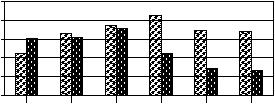Can our 2013 Nissan Leaf make it from Seattle to Meany Lodge on a single charge? The distance from our house is 77 miles and the nominal Leaf range is 84 miles. The key factor on this trip is Snoqualmie Pass, and the 3,022 feet we’d have to climb. I figured if I had any range left at the top of the pass, the gain from regenerative braking down the back side would just barely suffice.
At 7AM I pulled up the LEAF app and told the car to warm up the cabin. While still laying in bed. That’s a really nice feature! At 8AM we left Seattle with a toasty warm car and a full charge. I drove in ECO mode with the climate control off and the cruise set at 60 mph. As we passed North Bend, I had about 37 miles to go with a predicted range of 37 miles. That’s also where the climb begins in earnest.
As we climbed the pass, the charge meter dropped rapidly, yielding low battery alerts two miles before the summit. As I crested the pass, I guesstimated 5 miles left (the Leaf stops reporting below 6) plus the 5 miles I’d gain from regen. braking would total 10 miles worth of charge. Since the lodge is 13 miles from the pass, I opted to stop at the Chevron and juice up.
Lucas and I took a 20 minute ice cream break while our Leaf guzzled electrons until it had 10 miles of predicted range. I figured with 10 in the tank plus 5 from braking, I’d have plenty for the climb up to the lodge. We arrived with 8 miles remaining. Without the pit stop, we’d have likely run out a mile or two shy.
At the weekend work party, I took the head off TomCat’s Chevy 292 straight six engine, cut and ground steel plates and pipes, used a MIG welder for the first time (last weld, 25 years ago!), laid culvert, dug water trenches, and pressed apple cider. Lucas had a great time playing with a pack of 8 youngsters whose parents were getting the lodge ready for the ski season.
On Sunday afternoon we left the lodge with a full charge and a predicted range of 81 miles. After climbing 500 feet over the pass, the range crept higher and higher with each mile driven, peaking at 104 miles. As before, the key factor was elevation, and it’s mostly downhill on the return trip. We arrived home with 25 miles of range.
In summary, the Leaf has more than enough range to get home from Meany Lodge, but not quite enough to get there, due primarily to elevation. If we didn’t have another car, we could surely cover the distance by driving slower. With fair weather in daylight, 55 mph should do. If the weather was cold and headlights and/or climate control were needed, it might be possible at 45mph. I wouldn’t consider it fun.




You must be logged in to post a comment.